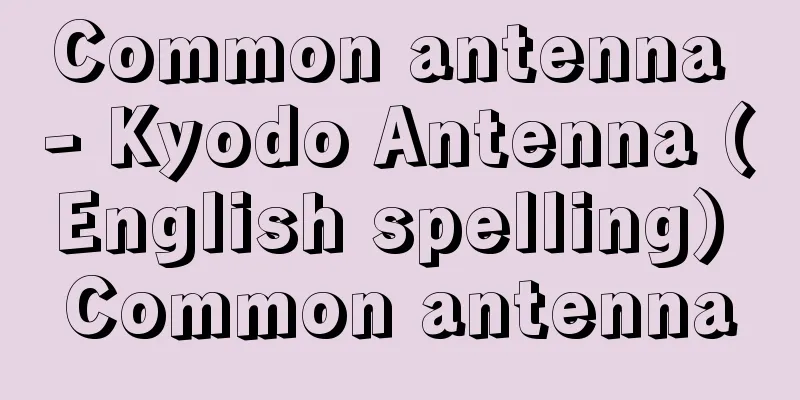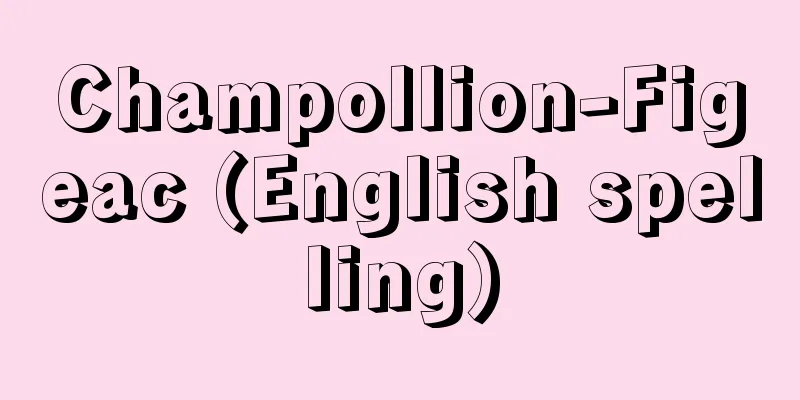Welding - Welding (English spelling)

|
Welding is a method of joining two solid materials of the same or different types by creating a direct atomic bond between the two solid materials, rather than gluing them with adhesives or fastening them with bolts or rivets. To weld metal materials, all that is required is to bring the two materials close together within a distance where the metal atoms of the two materials can form a metallic bond with each other while keeping the joining surfaces clean. To do this, various methods have been devised and put into practical use, such as heating and melting the joint and rearranging the metal atoms in that area (called fusion welding), or applying an external force to the joint to cause plastic deformation (called pressure welding). Brazing, a type of fusion welding that uses molten metal filler, was already in use in the Mesopotamian and Egyptian civilizations before 2500 BC. It was also known that iron could be joined by heating and forging when iron production began (1500 BC). However, it was only after the invention of arc welding at the end of the 19th century (Meritens, 1881), and especially after the dramatic development of welding technology during World War II, that welding became industrially used as a metal processing method on par with casting and forging, for example in the construction of ships and bridges and the manufacture of automobiles. [Takeshi Kuwana and Zenshiro Hara] Types of welding methodsIf we classify welding methods for metal materials based on the energy used, the welding method most widely used industrially uses electrical energy, and among these, arc welding accounts for the largest proportion. [Takeshi Kuwana and Zenshiro Hara] Arc weldingThis is a welding method that uses the heat of an arc to melt the joint. Until recently, manual welding using the shielded metal arc welding method was the most common method, but around World War II, automated submerged arc welding and MIG and TIG welding methods using inert gases were developed, with submerged arc welding being used in the construction of large steel structures such as ships and bridges, and the latter two being used to weld aluminum and stainless steel. After the war, gravity welding and horizontal welding, which are semi-automated methods of shielded metal arc welding, were also developed, and carbon dioxide gas arc welding has become so popular that it rivals shielded metal arc welding as a highly efficient welding method for steel. [Takeshi Kuwana and Zenshiro Hara] Electroslag weldingThis vertical welding method was developed in the Soviet Union and is particularly suitable for welding thick plates, making it possible to continuously weld thick steel plates up to about 1 meter thick. In this method, an electrode wire is fed from a nozzle into molten slag, and the electrode wire and base metal (metal plate) are melted by the Joule heat of the electric current flowing through the slag. Water-cooled copper plates are placed on both sides of the base metal to prevent the molten metal and slag from flowing out of the joint gap, and as the welding progresses, these are gradually raised upward along with the nozzle. A consumable nozzle type electroslag welding method has recently been developed and is widespread in Japan, in which a steel pipe covered with flux (solvent) is used instead of a nozzle, and the welding efficiency is improved by melting it as the welding progresses. There is also electrogas welding, which has a similar mechanism to electroslag welding, but uses carbon dioxide gas instead of flux as the envelope gas, and forms a molten pool with an arc while cooling the weld metal with a water-cooled copper plate. These welding methods are used to manufacture large structures using thick steel plates. [Takeshi Kuwana and Zenshiro Hara] Resistance weldingThis method of welding involves passing an electric current through the contact area of a welded joint, heating it with the resistance heat generated there, and applying pressure to weld it. Examples of this method include spot welding, seam welding, projection welding, and flash butt welding. Modern automobile body assembly is done almost exclusively by spot welding, with more than 3,000 spot welds per car being done by multi-spot welding machines and robots. Seam welding and projection welding are used in the manufacture of aircraft and car bodies. High-frequency welding is a method that uses the resistance heating of induced currents caused by high-frequency currents, and is used in the manufacture of steel pipes. [Takeshi Kuwana and Zenshiro Hara] Electron Beam WeldingThis method involves heating a tungsten filament in a high vacuum to emit thermoelectrons, accelerating the electrons with high voltage, and colliding them with the workpiece, generating heat to weld the material. This method makes it possible to focus the beam to less than one square millimeter using an electromagnetic lens, making it possible to obtain a narrow joint with very deep penetration. In addition, since welding is performed in a vacuum, it is easy to weld metals with high melting points that easily react with the atmosphere, such as zirconium, tungsten, and molybdenum. [Takeshi Kuwana and Zenshiro Hara] Plasma weldingThis is a welding method in which a high-temperature plasma flow of 10,000 to 20,000 K is formed by constricting the arc using a water-cooled confining nozzle, and this is used as the heat source. High-temperature plasma was initially used to cut plates of aluminum, copper, stainless steel, etc., but was later applied to welding. There are three methods for generating high-temperature plasma, and argon is usually used as the working gas for ejecting the plasma. (1) The plasma jet method (also called the non-transfer method) generates plasma between the electrode and the nozzle, and ejects it from the nozzle, making it applicable to welding and cutting nonmetallic materials. (2) In the plasma arc method (also called the transfer method), a plasma arc is formed between the electrode and the base material. It has high thermal efficiency and is used for welding general metallic materials. (3) The intermediate type generates both a plasma jet and an arc. It produces a stable low-current plasma arc, making it suitable for welding extremely thin plates. [Takeshi Kuwana and Zenshiro Hara] Gas weldingThis is a welding method that uses the heat from the combustion of a mixture of fuel gas and oxygen, and oxy-acetylene welding is widely used for welding metals. However, gas welding has a slower welding speed than arc welding, and the quality of the welded joint is inferior, so the use of this method is gradually decreasing. [Takeshi Kuwana and Zenshiro Hara] Thermite weldingThis welding method utilizes the intense exothermic reaction (thermit reaction) that occurs when a mixture of aluminum powder and iron oxide powder is ignited, and the molten iron that is the product of this reaction is poured into a mold that is set up around the weld joint. This method is used for butt welding of components with large cross-sectional areas such as axles and rails. [Takeshi Kuwana and Zenshiro Hara] Explosive weldingThis is a welding method that uses the shock waves generated by the explosion of explosives to press metals together at high speed. It is possible to join titanium, tantalum, copper, aluminum, stainless steel, etc. It is particularly used to manufacture clad materials made of mild steel and these metals. [Takeshi Kuwana and Zenshiro Hara] BrazingThis method involves pouring an alloy called a filler, which has a lower melting point than the base materials, into the gaps between the surfaces to be joined. In this case, filler with a melting point of 450°C or higher is called hard filler, and brazing using this is called hard brazing or brazing. When soft filler with a melting point of 450°C or lower is used, it is called soft brazing (usually called soldering). Silver alloys, copper alloys, and aluminum alloys are used as hard fillers, while lead, tin, and lead-tin alloys are used as soft filler. [Takeshi Kuwana and Zenshiro Hara] Friction weldingThis is a welding method in which the materials to be joined are moved relative to one another, and the joining surfaces are butted together with a constant pressure, using the frictional heat generated during the process as a heat source. When the joining ends soften due to the frictional heat and reach the welding temperature, the relative movement is stopped and pressure is applied in the axial direction to complete the joining. [Takeshi Kuwana and Zenshiro Hara] Pressure weldingThis is a method that has been used for a long time, in which the materials to be joined are strongly pressed, causing large localized plastic deformation. Methods in which pressure and heat are applied at the same time, such as gas pressure welding and forge welding, are called hot pressure welding or high-temperature pressure welding. On the other hand, pressure welding of highly ductile materials such as aluminum and copper can be performed by simply applying pressure at room temperature without heating. This is called cold pressure welding. [Takeshi Kuwana and Zenshiro Hara] Diffusion bondingThis method bonds the surfaces to be joined by applying pressure to them, heating them to near their recrystallization temperature, and diffusing the metal atoms. Because this method is usually performed in a vacuum, it is possible to bond highly active, high-melting-point metals such as tungsten, molybdenum, and zirconium. This method allows for precision bonding, as bonding can be performed without causing any change in the shape of the joint. In addition, because no molten solidification structure is formed and the bonding temperature is low, it is possible to bond composite materials, sintered alloys, or dissimilar metals. [Takeshi Kuwana and Zenshiro Hara] Ultrasonic weldingIt is a type of pressure welding method in which the workpieces are stacked and clamped between the welding tip and pressure stand, and then ultrasonic vibrations are applied from the welding tip while a light static pressure is applied. In this method, the friction of the joining surfaces caused by the vibration destroys the surface oxides and causes localized plastic deformation, resulting in adhesion between the newly exposed metal surfaces, and the localized temperature rise caused by the frictional heat promotes atomic diffusion and recrystallization, forming a strong pressure weld. This method is used to join metal foils and thin wires such as integrated circuits and semiconductor lead wires. [Takeshi Kuwana and Zenshiro Hara] Laser weldingThis is a welding method that uses a powerful beam of light generated by induced radiation between the energy levels of atoms or molecules. Laser beams have the strong characteristics of being a concentrated heat source with high energy density, so they have little thermal effect on materials and cause little thermal deformation, making them useful for precision welding and cutting. They are easy to use, as they can be used in the atmosphere and the beam can be easily guided to locations far away from the laser generator. Another possible welding method is to use sunlight as a heat source, but this has not yet been put to practical use. [Takeshi Kuwana and Zenshiro Hara] Advantages and disadvantages of weldingThe general features of welding include saving materials, reducing labor, and improving performance and lifespan. Welded joints have higher joining strength than riveted joints, which have been widely used in the assembly of conventional structures, and can be used to construct light and strong structures in a short period of time. In addition, welding has the advantage of being watertight and airtight, and is widely used in many fields, including shipbuilding, construction, and the nuclear power industry. However, welding has disadvantages, as it is a method of joining materials by applying high heat in a short period of time, it is prone to material changes, residual stress, deformation, and welding defects, and quality inspection is difficult. Welded structures are sensitive to stress concentration and are prone to brittle fracture at low temperatures. For this reason, careful attention must be paid to the welding design when using welding technology. [Takeshi Kuwana and Zenshiro Hara] Welding DesignWelding design is an important part of welding construction in the broad sense, and welding symbols for production drawings are established in the Japanese Industrial Standards (JIS Z 3021). When welding is used in the construction of a structure, it is necessary to have correct knowledge of welding materials, mechanical properties of joints, welding construction methods, occurrence of deformation and residual stress, calculation of welding costs, and post-welding inspection methods. [Takeshi Kuwana and Zenshiro Hara] [Reference] | | | | |©Shogakukan "> Main types and principles of welding Source: Shogakukan Encyclopedia Nipponica About Encyclopedia Nipponica Information | Legend |
|
同種または異種の2個の固体材料を、接着剤による接着やボルトやリベットによる緊結ではなく、両固体材料間に直接的な原子間結合を生じさせることによって接合する方法を溶接という。金属材料を溶接するには、接合面を清浄に保ったまま、両材の金属原子が相互に金属結合を形成しうる距離以内に両材を接近させればよい。そのためには、接合部を加熱・溶融し、その部分の金属原子を再配列させる(融接法という)とか、接合部に外力を加えて塑性変形をおこさせる(圧接法という)とか、さまざまな方法が考案、実用されている。 融接法の一種である溶融金属ろうによる溶接法=ろう付け法は、紀元前2500年以前のメソポタミア・エジプト文明ですでに用いられていた。鉄を加熱し鍛打すれば接合できることも製鉄の開始(前1500)とともに知られていた。しかし溶接法が鋳造法や鍛造法と並ぶ金属加工法の一つとして、船舶・橋梁(きょうりょう)の建造や自動車製造など工業的に実用されるようになったのは、19世紀末のアーク溶接の発明(メリテンス、1881)以後、とくに第二次世界大戦中の溶接技術の飛躍的発達以後のことである。 [桑名 武・原善四郎] 溶接法の種類金属材料の溶接法を、使用されるエネルギーによって分類してみると、工業的にもっとも大規模に実用されている溶接法は電気エネルギーを用いるものであり、そのなかでもアーク溶接の占める割合が大きい。 [桑名 武・原善四郎] アーク溶接アークの熱によって接合部を溶融して溶接する方法である。最近までその代表的なものは被覆アーク溶接法の手溶接であったが、第二次大戦にかけて、自動化されたサブマージアーク溶接法や、不活性ガスを用いるミグ溶接法・ティグ溶接法が発達し、サブマージアーク溶接法は船舶・橋梁など大型鋼構造物の建造に、後の2法はアルミニウムやステンレス鋼の溶接に実用されている。戦後は、被覆アーク溶接法の半自動化法であるグラビティ溶接や横置式溶接も発達し、炭酸ガスアーク溶接法が鋼材の高能率溶接法として被覆アーク溶接法に匹敵するほど普及している。 [桑名 武・原善四郎] エレクトロスラグ溶接ソ連で開発された垂直溶接法で、とくに厚板の溶接に適しており、1メートル程度の厚鋼板の連続溶接も可能である。この方法は、溶融したスラグ(鉱滓(こうさい))中に電極ワイヤをノズルから送給し、スラグ内を流れる電流のジュール熱によって電極ワイヤおよび母材(金属板)を溶融させるものである。溶融金属およびスラグが継手間隙(かんげき)から流れ出ないように母材の両側に水冷銅板を設置し、溶接の進行につれてこれをノズルとともに徐々に上方に引き上げてゆく。ノズルのかわりにフラックス(溶剤)を被覆した鋼管を用い、溶接の進行とともに溶融させて溶接能率を高めた消耗ノズル式エレクトロスラグ溶接法が最近わが国で開発され普及している。またエレクトロスラグ溶接と同様な機構で、フラックスのかわりに炭酸ガスを被包ガスとし、アークで溶融池を形成しながら溶接金属を水冷銅板で冷却する溶接法として、エレクトロガス溶接がある。これらの溶接法は厚鋼板を用いた大型構造物の製作に利用されている。 [桑名 武・原善四郎] 抵抗溶接溶接継手の接触部に電流を流し、ここに発生する抵抗熱によって加熱し、圧力を加えて溶接する方法で、スポット溶接、シーム溶接、プロジェクション溶接およびフラッシュバット溶接などがある。最近の自動車車体組立てはもっぱらスポット溶接によっており、1車当り3000か所以上のスポット溶接が多点溶接機およびロボットによって行われている。シーム溶接、プロジェクション溶接は航空機機体や車体製造に利用される。 高周波溶接は高周波電流による誘導電流の抵抗発熱を利用した方法であり、鋼管の製造に用いられる。 [桑名 武・原善四郎] 電子ビーム溶接高真空中でタングステンフィラメントを加熱して熱電子を放出させ、高電圧で電子を加速し、被溶接物に衝突させ、その発熱によって溶接する方法である。この方法は電磁レンズで1平方ミリメートル以下に焦点を絞ることが可能なので、幅の狭いしかも溶け込みの非常に深い継手を得ることができる。また真空中で溶接を行うので、ジルコニウム、タングステン、モリブデンなどのような大気と反応しやすい高融点の金属も容易に溶接できる。 [桑名 武・原善四郎] プラズマ溶接水冷拘束ノズルによってアークを緊縮させて1万~2万Kの高温プラズマ流を形成させ、これを熱源として溶接する方法である。高温プラズマは最初、アルミニウム、銅、ステンレス鋼などの板の切断に利用されていたが、その後、溶接に応用されるようになった。高温プラズマの発生方法としては次の3方式があり、プラズマ噴出のための動作ガスには普通、アルゴンが用いられる。 (1)プラズマジェット方式(非移行式ともいう)は、電極とノズルとの間に発生させたプラズマをノズルから噴出させる。そのため非金属材料の溶接および切断に適用できる。 (2)プラズマアーク方式(移行式ともいう)は、電極と母材の間にプラズマアークが形成される。熱効率が高く、一般の金属材料の溶接に用いられる。 (3)中間式は、プラズマジェットとアークをともに発生させる。安定した小電流プラズマアークが得られるので、極薄板の溶接に適する。 [桑名 武・原善四郎] ガス溶接燃料ガスと酸素との混合ガスの燃焼熱を利用して溶接する方法で、金属の溶接には酸素‐アセチレン溶接が広く用いられている。しかしガス溶接は、アーク溶接に比べ、溶接速度が遅く、溶接継手(接合部)の性質も劣るので、現在この方法の利用はしだいに少なくなっている。 [桑名 武・原善四郎] テルミット溶接アルミニウム粉と酸化鉄粉の混合物に点火するときに生ずる猛烈な発熱反応(テルミット反応)を利用し、その反応の生成物である溶融鉄を、溶接継手の周囲にあらかじめ設けた鋳型内に注入して溶接する方法である。この方法は、車軸、レールなど断面積が大きい部材の突合せ溶接に用いられる。 [桑名 武・原善四郎] 爆圧溶接火薬の爆発時に発生する衝撃波を利用して金属どうしを高速度で圧接する溶接法である。チタン、タンタル、銅、アルミニウム、ステンレス鋼などの接合が可能である。とくに軟鋼とこれらの金属とのクラッド材の製造に利用される。 [桑名 武・原善四郎] ろう付け材料の接合面のすきまに、ろうとよばれる、母材より融点の低い合金を流し込んで接合する方法である。この場合、融点が450℃以上のろうを硬(こう)ろうといい、これによるろう付けを硬ろう付け、またはブレージングbrazingとよぶ。融点が450℃以下の軟ろうを用いる場合を軟ろう付け(普通、はんだ付けという)という。硬ろうとしては銀合金、銅合金、アルミニウム合金などが用いられ、軟ろうには鉛、スズ、鉛‐スズ合金が用いられる。 [桑名 武・原善四郎] 摩擦溶接接合しようとする材料を相対的に運動させながら、一定の加圧力で接合面を突き合わせ、その際発生する摩擦熱を熱源として利用して溶接する方法である。接合端部が摩擦熱によって軟化し、圧接温度に達したとき、相対運動を停止するとともに軸方向に加圧して接合を完了する。 [桑名 武・原善四郎] 圧接接合材を強く加圧して局部的に大きな塑性変形を与えて接合させる方法で、古くから用いられた方法である。ガス圧接や鍛接のように、加圧と同時に加熱する方法を、加熱圧接または高温圧接とよぶ。一方、アルミニウム、銅など延性の高い材料の圧接は、加熱せず常温のまま加圧するだけで溶接が可能である。これを冷間圧接という。 [桑名 武・原善四郎] 拡散接合接合面を加圧・密着させ、再結晶温度付近に加熱し、金属原子を拡散させることにより接合する方法である。通常真空中で行われるので、タングステン、モリブデン、ジルコニウムなどのような活性の高い高融点金属の接合も可能である。この方法では接合部の形状変化を伴わずに接合できることから、精密接合が可能である。また、溶融凝固組織の形成がなく、接合温度が低いことから、複合材料、焼結合金あるいは異種金属間の接合が可能である。 [桑名 武・原善四郎] 超音波溶接一種の圧接法であり、被溶接物を重ねて、溶接チップと受圧台の間に挟み、軽い静圧力を加えつつ、溶接チップから超音波振動を与えることにより溶接する方法である。この方法では、振動に伴う接合面の摩擦による表面酸化物の破壊および局部的塑性変形により、新しく露出した金属面どうしの密着が達成され、さらに摩擦熱による局部的な温度上昇により、原子の拡散および再結晶が促進され、強固な圧接部が形成される。この方法は集積回路、半導体のリード線など金属箔(はく)、細線の接合に利用されている。 [桑名 武・原善四郎] レーザー溶接原子または分子のエネルギー準位間の誘導放射で生じた強力なエネルギーをもつ光線を利用して溶接する方法である。レーザー光線は高エネルギー密度の集中熱源としての性格が強いので、材料に与える熱影響が少なく、熱変形も小さいので精密な溶接、切断などに利用される。大気中作業が可能で、レーザー発生装置から離れた場所までビームを簡単に導くことができるので操作性が高い。 このほか、太陽光線を熱源とする溶接法が考えられるが、現在のところ実用化には至っていない。 [桑名 武・原善四郎] 溶接の長所・短所溶接の一般的特徴としては、資材の節約、工数の減少、性能と寿命の向上があげられる。溶接継手は、従来構造物の組立てによく用いられてきたリベット継手よりも接合強度が高く、軽くて強い構造物を短期間に建造することができる。また水密性、気密性に優れた長所をもっており、溶接技術は造船、建築、原子力産業はじめ多くの分野で広く利用されている。しかし短所として、溶接は短時間内に高熱を加えて接合する方法であるので、材質の変化、残留応力、変形あるいは溶接欠陥が生じやすく、また品質検査が困難であり、溶接構造物は応力集中に敏感で、低温下で脆性(ぜいせい)破壊の危険を生じやすい欠点がある。このため溶接技術を利用するにあたっては溶接設計に十分注意を払う必要がある。 [桑名 武・原善四郎] 溶接設計溶接設計は広い意味の溶接施工の重要な一部門であり、製作図面に対しては日本工業規格(JIS Z 3021)で溶接記号が制定されている。構造物の工作に溶接を採用する際には、溶接材料、継手の機械的性質、溶接施工法、変形と残留応力の発生、溶接費の算定、溶接後の検査法などにつき正しい知識をもって行う必要がある。 [桑名 武・原善四郎] [参照項目] | | | | |©Shogakukan"> 溶接のおもな種類と原理 出典 小学館 日本大百科全書(ニッポニカ)日本大百科全書(ニッポニカ)について 情報 | 凡例 |
>>: Fused phosphate fertilizer (Fused phosphate fertilizer)
Recommend
Gyosankan - Gyosankan
…During the Han dynasty, it was called Zhongwu Co...
Requinto (English spelling) [Spain]
A small guitar that is usually tuned a fifth highe...
Cape Suzu
A general term for the tip of Noto Peninsula in I...
Rangyoku - Rangyoku
1. The musical style of Noh music, which Zeami cla...
Abílio Manuel de Guerra Junqueiro
1850‐1923 Portuguese poet. After graduating from t...
Lockyer - Joseph Norman Lockyer
British astronomer. Discoverer of helium in the s...
Ibokisago - Ibokisago
A gastropod snail of the family Celastridae of th...
Pliska
...The country's name "Bulgaria" co...
Oken, L.
...Scientists also formed new academic societies ...
Iwamoto Sashichi
...A series of books from the end of the Edo peri...
Barbus titteya (English spelling) Barbustitteya
...It is better not to keep slow-moving fish, suc...
Black barnacle (English name) Tetraclita japonica
A marine animal of the order Sessile of the class ...
Camping - Rinkan Gakkou
A type of educational event held at schools. Durin...
Sea tide sound - Kaichoon
A collection of translated poems by Ueda Bin. Pub...
Dog Tsukuba Collection - Dog Tsukuba Collection
A collection of haiku from the late Muromachi per...









